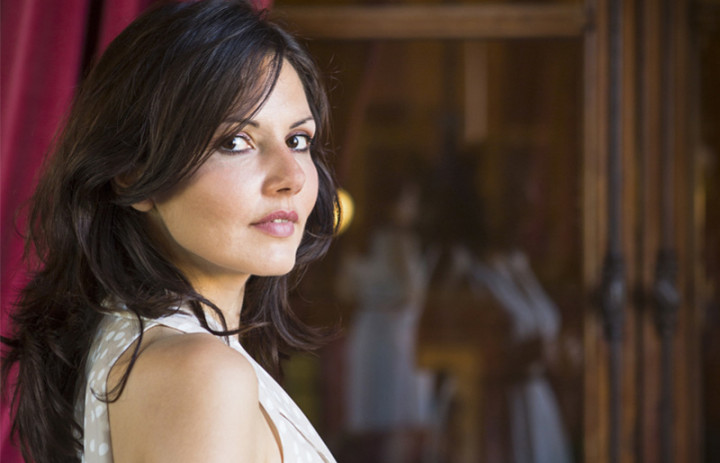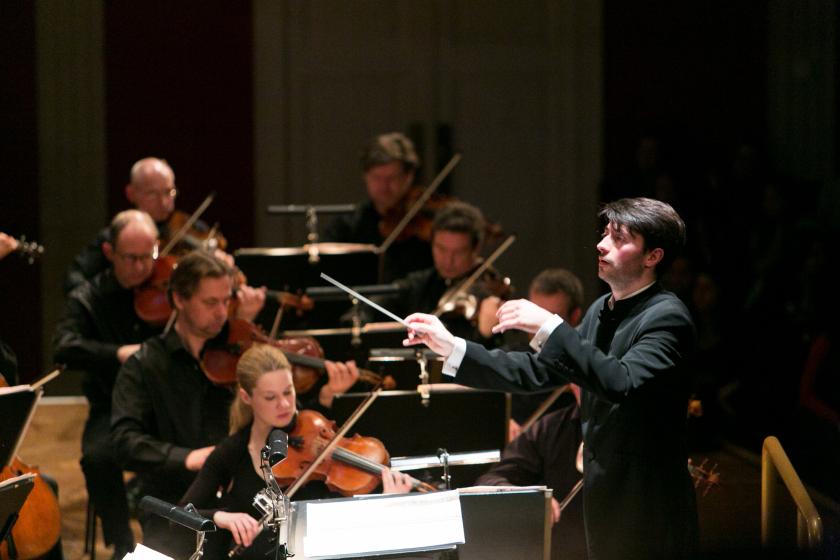Haydn, Mozart and Beethoven: it’s a while since I have heard the Scottish Chamber Orchestra play such an essentially classical programme on its home turf, the Queen’s Hall in Edinburgh. Recent reviews have focused on concerts in the much more capacious Usher Hall, where this intrepid orchestra has pushed at the boundaries of its natural repertoire with an ongoing Brahms cycle and even a Mahler symphony.
The difference is striking. It’s not just the numbers - in the Usher Hall a chamber orchestra of about 40 can effortlessly swell to more than 60 - but it is more the contrast of texture and acoustic that makes performances in the two halls seem like two entirely separate orchestras, united only by the SCO’s trademark precision and discipline.
Last week, principal conductor Robin Ticciati offered us the third instalment of his revelatory cycle of Brahms symphonies, preceded by the Tragic Overture and Berg’s limpidly beautiful Seven Early Songs. Soprano soloist Dorothea Röschmann sang with great finesse, even and controlled, but at no point did she really command our full attention. Admittedly the lyrics are so much romantic meandering on misty mountains, but in the Usher’s cavernous spaces she needed to deliver these slight masterpieces with more bite. To the Brahms symphony Ticciati brought a now familiar transparency. With a relatively lightweight string section, the numerous solos and decorations from the woodwind shone through the orchestral texture with absolute clarity.
 Fast forward a week to a concert on the other side of town under the young Spanish conductor Antonio Mendez. Where the Usher Hall is plush and Edwardian, the Queen’s Hall is a converted Georgian church, cramped, rather down at heel, and blighted by difficult sightlines from uncomfortable pews. Yet with a small orchestra jammed up against the wooden panelling at the back of the stage, the sound was miraculous: clean, direct, but rich, too. Here the woodwind were not just heard through the orchestra, they were the mainstay of the orchestral texture. With the strings using only the most sparing vibrato, this was evident in the lucid performance of Haydn’s Symphony No.99, but particularly true in the driving woodwind and brass rhythms that propel Beethoven’s Symphony No.7, which ended the programme.
Fast forward a week to a concert on the other side of town under the young Spanish conductor Antonio Mendez. Where the Usher Hall is plush and Edwardian, the Queen’s Hall is a converted Georgian church, cramped, rather down at heel, and blighted by difficult sightlines from uncomfortable pews. Yet with a small orchestra jammed up against the wooden panelling at the back of the stage, the sound was miraculous: clean, direct, but rich, too. Here the woodwind were not just heard through the orchestra, they were the mainstay of the orchestral texture. With the strings using only the most sparing vibrato, this was evident in the lucid performance of Haydn’s Symphony No.99, but particularly true in the driving woodwind and brass rhythms that propel Beethoven’s Symphony No.7, which ended the programme.
Conducting each symphony without a score, Mendez had evidently done his homework, for the twists and turns of this most light-footed of symphonies were beautifully realised. The final bars may have been a bit of a show-off accelerando but Mendez clearly relished the opportunity to put such a virtuosic orchestra through its paces - the audience loved it too.
Giordano's voice has an edge, a gripping quality, and a power of communicationIn the middle, we had a change of soloist and programme. Regula Mülemann, who was to sing some Mozart concert arias, was unwell, so the Sicilian soprano Laura Giordano (pictured above) stepped in with a slightly less adventurous trio of arias from Mozart’s Da Ponte operas: "Deh vieni" from Figaro, "Non mi dir" from Don Giovanni, and "Come scoglio" from Cosi. Giordano’s voice is not, to my ears, overtly sensuous or beautiful, but by the end of the third aria I realised that I had watched her performance with absolute attention. The voice has an edge, a gripping quality, and a power of communication that I would guess comes from operatic experience. It’s also quite big, and I sensed that she was holding back in the more confined spaces of the Queen’s Hall, but it did make me wonder what the Berg songs might have sounded like in a smaller acoustic.
A final word about the timpani, gleaming period-style kettle drums whose distinctively crisp beat, along with the plangent sound of natural horns, does much to place the orchestra’s sound world at the beginning of the 19th century. But they are hard work: timpanist Matthew Hardy’s tireless attention to his drums makes the rest of the orchestra look as though it is enjoying a summer afternoon by the river. Each drum is tuned by six large butterfly nuts, and with all the key changes demanded by Beethoven and Haydn there was not a moment when Mr Hardy was not crouched over his instruments, either retuning to a new pitch or refining the tuning, all done accurately, inaudibly, and at great speed. Brought to his feet by Mendez, a cheer from this large and appreciative audience was well deserved.















Add comment